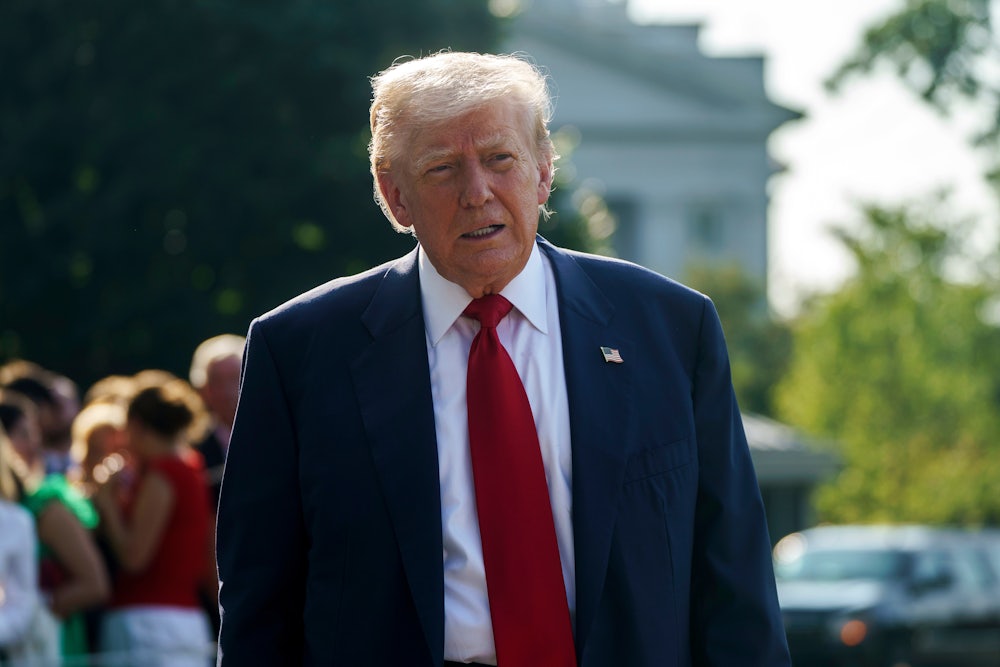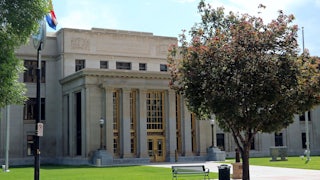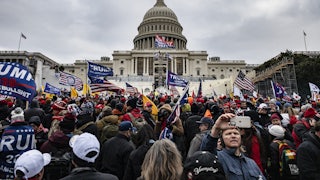Speaking to reporters on Friday ahead of a state visit to the United Kingdom, President Donald Trump implored the media to stop focusing on the story that has dogged him for weeks—his long friendship with the notorious alleged pedophile and sex trafficker Jeffrey Epstein—and instead focus on a far more sinister plot: Barack Obama’s attempted “coup” after Trump won the 2016 election. “People should really focus on how well the country is doing or they should focus on the fact that Barack Hussein Obama led a coup,” a visibly frustrated Trump raved outside the White House.
It was a less salacious statement than one he made two days earlier when he accused Obama of “treason,” or a deepfake video he posted of the former president being arrested and imprisoned on Sunday. Both were part of a concerted, desperate effort to drum up a counter-scandal to drown out the Epstein story—one that began on July 18 when Tulsi Gabbard, Trump’s director of national intelligence, released documents purporting to show that Obama had engaged in a “treasonous conspiracy” in 2016. On Wednesday, for good measure, she also claimed that Russian intelligence had proof that Hillary Clinton was taking a heavy daily dose of tranquilizers—just a little icing on a conspiracy cake.
These absurd allegations have certainly gotten a fair amount of play on conservative and right-wing media. But they’re not working as designed: The Epstein story is still the biggest one in the country. It is causing Trump’s approval rating to plummet and even loosening his iron grip on Republican voters. And we have every reason to believe these trends will continue, for the simple reason that the public cares more about the truly fishy Epstein scandal than yet another manufactured scandal about a president who left office nearly 10 years ago.
Put another way, the Democrats’ utter lack of leadership is redounding to their benefit in this rare instance: Trump simply doesn’t have a prominent Democratic foil to redirect attention to, so he’s playing old hits that a diminishing number of Americans want to hear.
Trump is, quite literally, trying to run the exact playbook he ran, with some success, during his first term. Facing damaging accusations of “collusion” with a hostile foreign power, he insisted that he was actually the victim of a massive “witch hunt” led by powerful forces inside the government—the deep state—and aided by prominent Democrats, including Obama and Clinton. His attorney general, Bill Barr, appointed special counsel John Durham in 2019 to investigate this supposed scandal. Durham brought just three criminal complaints, none of which were against Obama. He lost both cases that actually went to trial. So this notion of “treason” was well litigated during Trump’s first term and revealed then to be bullshit.
Trump is airing these claims again, however, because they did succeed in neutralizing the Russia scandal politically. His claim of a “witch hunt” was really an extension of his campaign argument in 2016: that there exists a powerful, undemocratic cabal of elites that is undermining the country at every turn. Trump’s presidency was about destroying that cabal—so it was no wonder it was fighting back in the form of a made-up (actually well-documented) story about Russia attempting to influence the election.
Trump’s invocation of Obama at that time never took off in part because the former president was still popular. Hillary and Bill Clinton were another matter entirely. Trump had defeated Hillary in the 2016 election in part because she and her husband were living symbols of a political order that many people despised: the corrupt elites that Trump was railing against at every turn. Moreover, as had been true since the early 1990s, the Clintons—and particularly Hillary—were an effective cipher for the right’s conspiracy theories, not to mention an abiding interest of the political press. That’s why Clinton’s use of a private email server, a dumb decision that would have been a minor scandal for any other secretary of state, took on such outsize importance and contributed to her defeat. So the public was more receptive to the notion that she was part of some kind of deep state conspiracy, at least enough to raise questions about the Russia investigation. There was even a hint of truth in Trump’s mad ravings about wiretaps and whatnot: Elites from both parties really were working to stymie his presidency, both inside and outside the government.
There are many reasons the same move isn’t working now. For one thing, Trump is dusting off an old story that many people are already familiar with. For another, the idea that the Epstein files were being covered up by elites originated on the right-wing fringe—and was even used by Trump in 2016 because of Bill Clinton’s connections to Epstein. Unlike with Russiagate, Trump is caught in a web that he and his allies helped spin. The fact that it is a thinly disguised attempt to distract from the Epstein story only damages its credibility further.
Plus, unlike in his first term, Trump is in full control of the government. There are no more analogues to Jeff Flake or John McCain in Congress—there are rabblerousers like Representative Thomas Massie, but the party is clearly and unmistakably marching in lockstep behind him. And Trump’s Cabinet is stacked with arch loyalists who are using their powers to remake the federal government in his image; you won’t find anyone fitting the profile of, say, Rex Tillerson or Jim Mattis. Trump could credibly claim seven years ago that there were forces in the government using their powers to undermine him. He cannot do so now.
Lastly, Trump’s old Democratic foils have lost their salience. Obama, who remains popular, spends more time on yachts with his rich buddies than he does doing politics (though his office did make a rare public statement to call Trump’s claims of treason “nonsense”). Hillary Clinton is still out there, but nowhere near as prominent; Bill Clinton is almost 80. Trump could try to whip up conspiratorial interest in the most recent Democratic president, whose favorability numbers are about as low as Trump’s, but Joe Biden is in exile—and even Trump would strain to accuse him of orchestrating a massive conspiracy, given that he has spent the last half-decade calling him a senile puppet. On Sunday, a flailing Trump stretched even further, suggesting that Kamala Harris should be prosecuted over normal, completely aboveboard payments made by her campaign to Oprah and Beyoncé (whom Trump, naturally, thinks should be prosecuted as well).
And there are no new Democratic foils to help Trump distract from the mess he’s in. The party’s leaders in the House and Senate—Hakeem Jeffries and Chuck Schumer, respectively—are uncharismatic husks who have spent the past six months struggling to orchestrate basic messaging to counter the Republicans, let alone lead any sort of resistance to Trump. There is no clear Democratic favorite for the 2028 presidential nomination for him to take aim at. The closest to a new foil, California Governor Gavin Newsom, is more akin to a Trump sparring partner—and seems to be going out of his way to defuse right-wing attacks by punching left.
This gigantic void of leadership is, by and large, a serious problem for the Democrats, who are hoping to win back the House next year to stymie Trump’s calamitous agenda. The party is in the midst of an existential crisis: It does not have a clear or coherent identity, nor a strategy for fighting Trump, nor a place for what to do if it wins back power. But there is a silver lining here. Trump is frantically searching for a prominent Democrat with which to feud, so he can distract from a scandal that’s dragging down his presidency. He won’t succeed, though, because one doesn’t exist.






